HMS Prince of Wales recently demonstrated high-speed capabilities during a series of intensive power tests.
This monumental 65,000-tonne aircraft carrier transformed serene seas into a tempest during these rigorous examinations, as documented in a video posted online.
The footage reveals the ship’s engines and propellers generating an immense wake, manifesting crashing waves on the formerly calm sea surface.
65 kilo tonnes of heavy metal makes calm seas rage…🌊🌊🌊
Power tests complete…
More tomorrow… pic.twitter.com/M0ANZuTW5V
— HMS Prince of Wales (@HMSPWLS) July 27, 2023
The official Twitter account of HMS Prince of Wales disseminated these images, boasting the high-speed prowess and heavy metal power of the ship. These power tests form a crucial component of the ongoing operational assessment for HMS Prince of Wales.
HMS Prince of Wales recently prepared to resume duties after a nine-month hiatus dedicated to repairs. Post undergoing significant upgrades, the aircraft carrier has left dry dock at Rosyth and moved into the River Forth.
Once stationed at anchor and in deeper water, the ship’s team brought machinery and systems to life, before setting sail under the iconic Forth Bridges to Portsmouth.
“After nine months undergoing engineering repairs and receiving significant capability enhancements to support her future tasking, aircraft carrier HMS Prince of Wales moved out of dry dock at Rosyth and into the River Forth.”
The ship is scheduled to build upon its past achievements, which include acting as NATO’s command ship and leading the Maritime High Readiness Force in the Arctic. It will assume the mantle of the nation’s flagship from HMS Queen Elizabeth by the end of 2024.



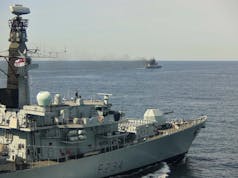
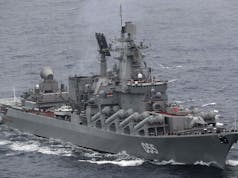
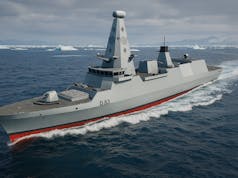

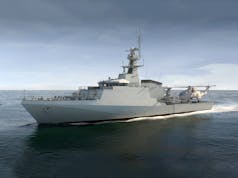

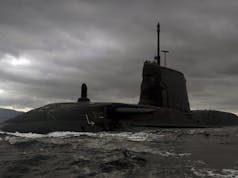
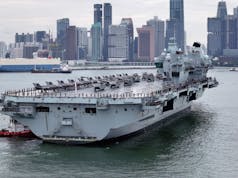
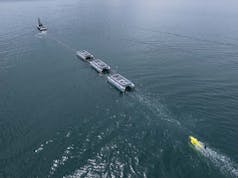
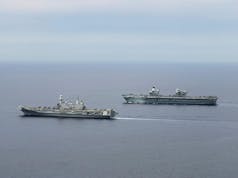

Whooosh..Right hand down a bit.
Brilliant.
I so want to watch the two carriers race each other!
You are some kind of a prevert!
We all are. It’s important to pick one they haven’t made illegal yet.
Bet the Senior Engineer’s got a large bar tab/laundry bill. 😜😂. 👏Well done PrOW.
Full power trails, a rare treat! I wonder how many litres to the nm she does? Anyone know or have a guesstimate?
I see some figures of 8,600t of fuel for 10,000 nautical miles endurance at 15kt. Not sure how accurate they are, so take with some salt.
So that’s about 0.86 tons to the nautical mile, which I think is about 1,500 litres to the nm.
That’s just cruising economically. High speed will eat up loads more fuel, 10 times at a guess.
Rolls Royce engines. That means if you have to ask, you can’t afford it.
Clearly flawed …Little more than a wreak … Good only for spares …
Idiot, you know nothing.
We do allow sarcasm here.
Agreed, Barry. Mothing more than a rust bucket stripped for spares. /s
Thanks mate! I don’t play with the dense types any more.
The official phrase was “extended readiness”.
You’d think it would work how much did it cost 3.2 billion to build and if it can’t hold top speed jeez this isn’t something to be proud of
It’s a bit of navy porn that’s all. Seeing a big ship go full speed is enjoyable for a lot of people.
It’s part of the trials after a refit.
I enjoyed watching it. If u didn’t that’s ok but not sure why u would bother watching.
Yeah I used to be apart of this shambles of a navy so I know what ship is doing they probably get a pipe everytime they changing course to let the crew know that the ship may roll heavily from the oow, and before this they probably had to secure everything to sea state 7 and then when trials are done get on the upperdeck no loafing in the mess or do a clear lower deck fod plod even though anything on the deck is probably clear anyway from all the maneuvers
3.2 billion for a 70,000 ton carrier is probably one of the most cost effective carriers in the world….
Still breaks down so shit to me
Things break and they get fixed, be proud rather than negative, who else apart from US has this capability (and look at the issues with the Ford class)
Every ship and boat on the ocean spends a large amount of time breaking down…the stresses the sea puts on boats and even more so large ships is profound…literally every moment of a ship or boats life the sea is working to break it…large ships are especially complex and prone to breaking down….most ships and boats have something broken all the time…I cannot tell you how much money and time fixing stuff, I’ve poured into my boats and they are small 30 footers…even new boats break all the time…
👍👍been there, done it, had the T-shirt until it was used to temporarily plug (fix) a failed sea cock
Yeah, because the invincible class never broke down (on its way to war no less) ships often have problems when they are new, in this example there was a know variance in the propellor shaft from construction, the decision was taken to enter service with it as it was believed to be with in tolerance.
Calculated risks where taken and on this occasion they did not work out but I would rather have a navy prepared to take a few risks than keep vessels in dock for ever.
Compare to Ford Class, CDG, Kuznetsnov, Liaoning and Vikrant the QE class has have very few issues entering into service.
The real headline is that with in just four days of the Incident HMS Queen Elizabeth was sailing to cover HMS PoW role in exercises.
That the mark of a truly capable navy.
The design of the carriers’ drive train has been improved as a direct consequence of PoW breaking down. That improvement would not otherwise have been made.
What made you so bitter ? Are you still disappointed that you are the only perfect person on the planet ? Specialist kit built to a brand new design is always subject to gremlins and R09 is no exception. The repairs gave RN the opportunity to bring forward a lot of very useful upgrades, which will benefit both carriers.
Nothing this big would ever work straight out of the box. I remember seeing a film about the old old Ark Royal going out, its bridge dials showing one of its engines was in reverse! Captain said ‘You can’t sort these problems out in harbour.’
You need to understand that the repairs recently completed involved modifications to the original design. The two carriers are custom built, in effect prototypes, so there is always a little anxiety about changes until they have been properly tested.
To be fair the first thing I’d do if I was made captain would be a top speed handbreak turn.
Is it considered rude to do powerslides in port?
How fast can a carrier go backwards?
I have a feeling I’d not be captain for long.
Boy racers like you would probably have more fun in a Type 45.
One thing that has been noticeable with our two aircraft carriers is the lack of stern wash/wake at speed.
Compre ours to USA carriers (you tube) and it’s hats off to thank our maritime architects for producing stealthier footprints.
Half the purpose of this us to test her fully and the other half is to clearly demonstrate that she is fully *back* in HM’s service.
Things break: they get fixed.
especially ships and boats…most people don’t quite realise how horrible the ocean actually is…anyone that owns a boat and operates a boat of any type or size Knows you spend half the time doing standard preventative maintenance, just to make sure nothing horrible happens and the other half of the time having something on the bloody thing repaired….I love my boats but even I admit they are all just holes in the water you pour money into as on an good day the the sea just does it’s best to reduce the whole thing to rot and corrosion and on an bad day tries to tear the whole thing to pieces..
She’s doing well after being stripped for spares. The press had a field day over that.
Supposedly it was a fuel/oils filter and a chain from the deck lift.
Glad to see her back. Now where’s the aircraft.
Ducks for incoming
The Americans seem to get upset when it is pointed out that our carriers are just a teeny bit faster than their nuclear-powered carriers.
I strongly suspect that the Nimitz class CVNs have a 3+ knot max speed advantage over the the QEC CV’s in an operational configuration two years out of drydock. The USN carriers need to be able to generate 30 kts of wind over deck in a flat calm to launch and recover fully loaded F/A-18C/Ds. By comparison, 25 knots is plenty for a QEC launching a fully loaded F-35B, but its ‘bring back’ load would then be too high for a vertical landing, hence the need to develop the rolling landing technique to avoid ditching expensive ordinance. But this is all classified guesstimate territory – it will be decades before the actual umbers are released in declassified documents.
Agree, no way a QE class is faster than a Nimitz/Ford class and nor does it need to be.
It’s 5 times cheaper to build and 10 times cheaper to operate than a Ford class though.
Why do you categorically state that QE is slower than Nimitz/Ford? The published information indicates otherwise. Admittedly there is only half a knot in it.
I fully agree about the costings point.
My information is from unclassified sources and indicates that QE is half a knot faster than Nimitz.
In June 1999 the USN released the max speed achieved by several CVN’s on trials:
Enterprise – 33.6 kts (After last refit);
Nimitz – 31.5kts;
Theodore Roosevelt – 31.3 kts;
Harry S Truman – 30.9 kts
Unfortunately we have no similar official date for the QEC. IHS Janes Fighting Ships lists their speed as 26 kts, and is unlikely to be far out given the publications extensive official use and very informed sources, but seems a bit low. The key question is how much reliance we can put on reports that in 2017 AIS apparently tracked QNLZ doing 27.1, 29 and 32 knots during trials. We just don’t know the conditions, tides, currents and water depth in which this occurred. And why did she have her AIS transponder turned on! Considering her size, displacement and engineering plant, 28kts is quite plausible. But more than that might be ambitious. Remember that she has only two shafts compared to the four of USN super carriers, so cavitation and loss of propulsive efficiency is more of problem due to higher RPMs. One thing seems certain, the QEC can outpace the badly under powered French carrier Charles de Gaulle that got nowhere near her expected 27 kts on initial sea trials. Only after being fitted with redesigned propellers did she officially reach that landmark.
Design speed and actual speed vary from each other for a number of obvious reasons. What the official figures never quote is the expected range of top speeds, based on expected variations in the relevant parameters.
No ship ever operates at its’ absolute top speed except in an emergency because you reduce the life and/or service interval of the engines if you do that too often.
Thanks Cedric. Was fully aware of that. A CSG in transit will go at the speed of its slowest escort, so a carrier will probably never go at top speed.
Maybe flat out bust speed? But the fuel consumption would be eye watering.
But nuclear can keeping going all week at speed.
In reality a CSG would travel at the speed of the slowest escorting ship (in transit anyway).
Let us hope the US don’t regularly assign one or more Avenger class MCMVs (top speed 14kts!)
Of course it does otherwise it rapidly ceases to be a group!
Good luck with getting 14knts out of an Avenger!
I have worked on them a lot and compared to UK MCMV’s they are positively stone aged.
Thanks mate. Your knowledge is far better than Wiki’s!
Hi GB
I was under the impression the Avengers were being retired?
I finished working on one a few weeks ago. Until LCS with MCM capability is established they are going to plod on for probably another 2 years at least. They are getting very maintenance heavy.
Considering that LCS was originally supposed to be operating in the Gulf by 2017 nobody is holding there breath that the 2 years is accurate.
thanks for the intel GB .
Yes it could but then you start getting issues with longer half life isotopes in the cooling loop being outside of the immediate containment arrangements and if I remember correctly ( Its been a while) releasing neutrons . These only appear after a long hard run on the reactor. Its probably more of an issue for a sub than a surface unit to be fair. Neutron emissions are a lot more difficult to monitor.
The stuff you remember from a 3 week nuclear accident monitoring and control course at Institute of Naval Medicine Alverstoke in 1994!
Would those isotopes still be in the primary loop or are they being produced in the secondary via higher exposure?
Primary loop. The half life is long enough for them to be an issue (no more than a minute though) but they decay back relatively quickly and are not an issue at lower powers…
As I said it’s been a while since I did nuclear reactor theory, exposure rates and monitoring. Great course though. We needed to do it for visiting boats at the z berth in Hong Kong and just incase the Daya Bay nuclear plant up the coast in China had an issue.
Mmm Speed always grabs my attention,Nimitz class quoted as 30+ knots,with Nuclear Power driving 4 Shafts, id think 35 knots should be made pretty easily.QE class to its credit has been praised for having a very efficient Hull design,with Two Shafts, and with wiki quoting 32 knots – its comfortably above the 25 knots design speed,so they are not far apart id say.
I agree. Not far apart in top speed although in reality a carrier group will invariaby travel at the speed of its slowest escort. If a US carrier group has accompanying MCMV that will be very slow indeed (Avenger class MCMV can only top 14kts!)
Is this the RN equivalent of a “Crazy Ivan” 🙂
😀👍
😊👍
Given the nonsense that has been written about PoW.
RN need to do this for:-
– end test; and
– public demonstration that she is running on both shafts at full power.
Otherwise there would be silly articles saying she couldn’t make full power etc
The difference is that Captain Hewitt had official permission for his burn-up.
Immense wake means immensely inefficient!! It would be more impressive if there were just ripples.